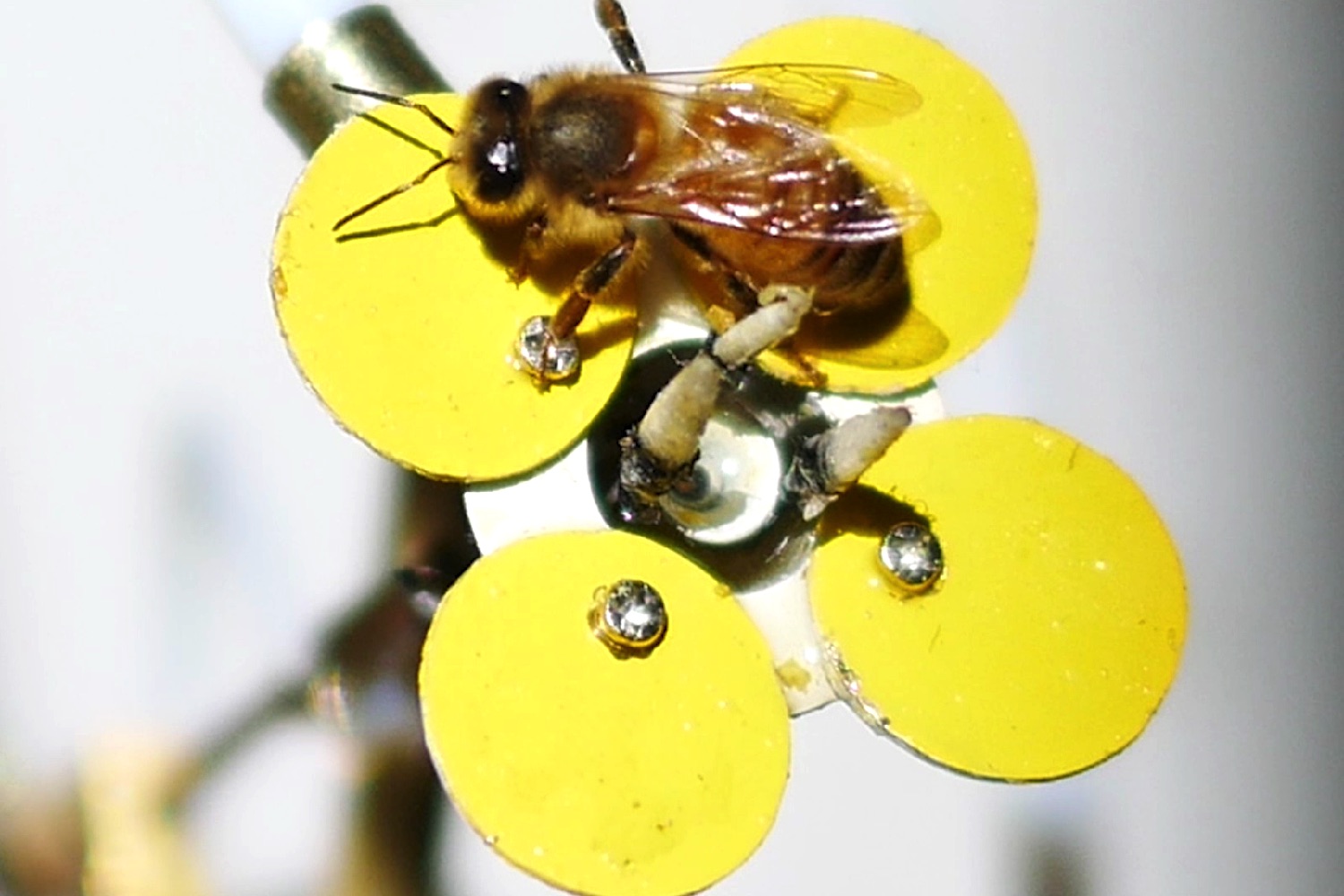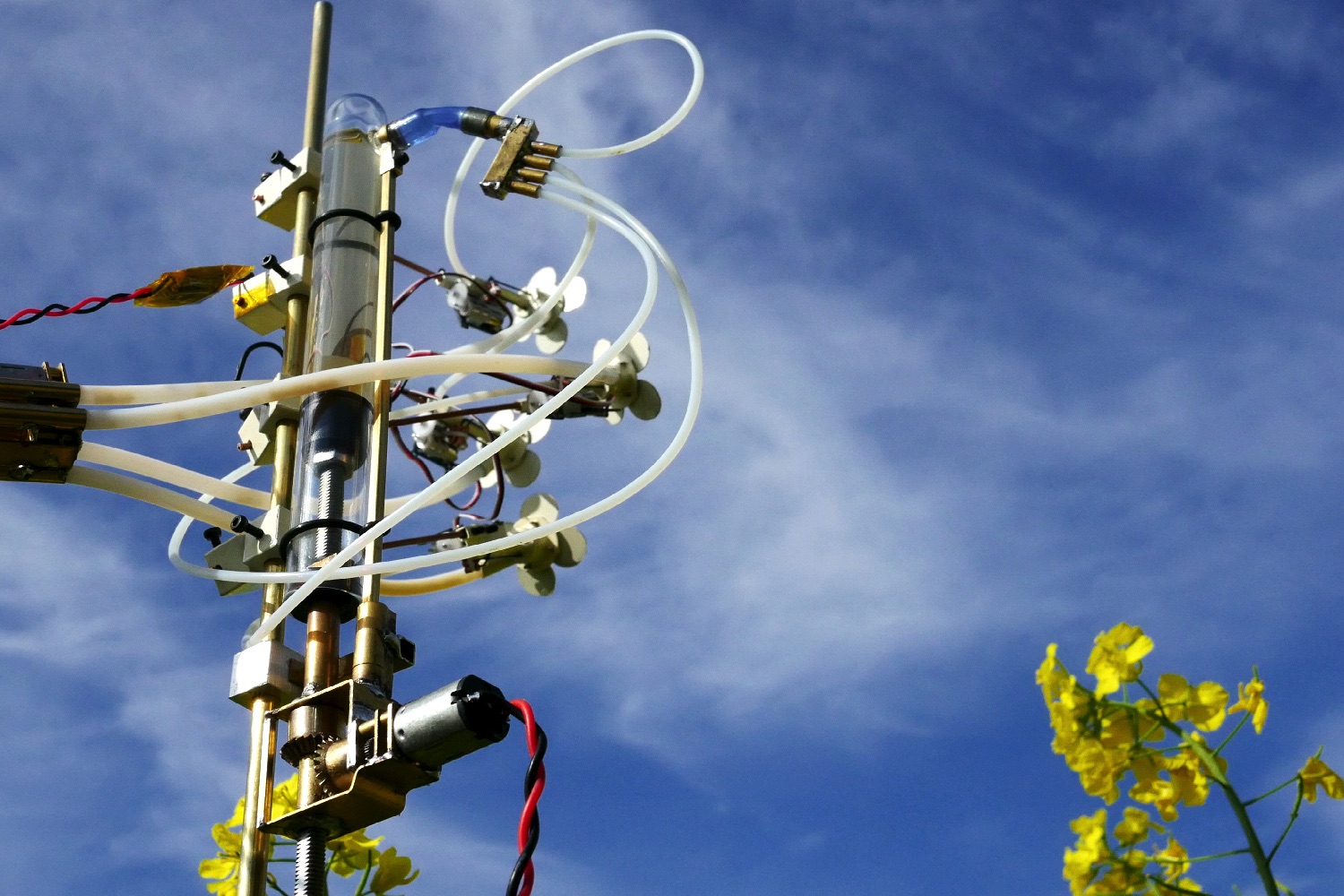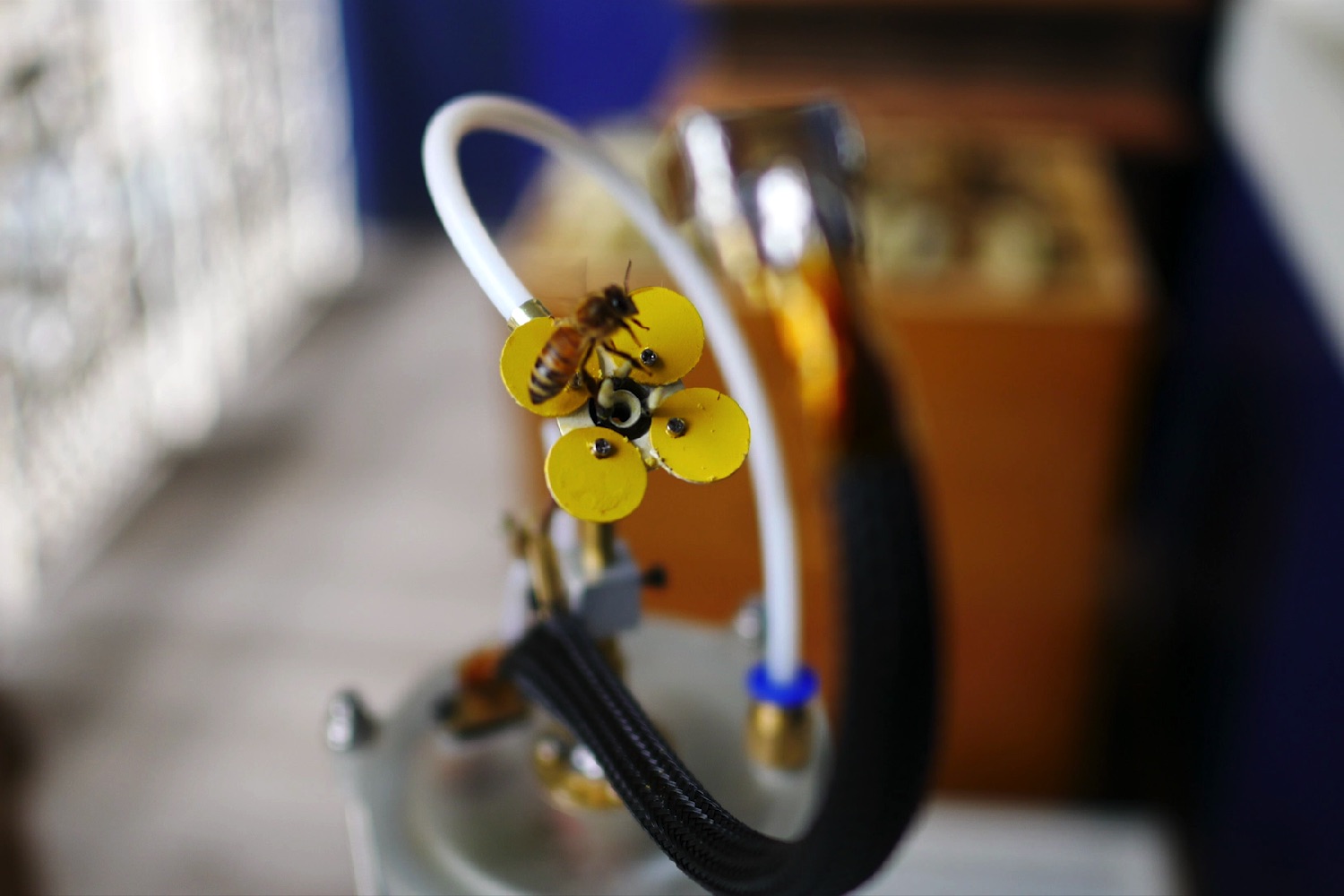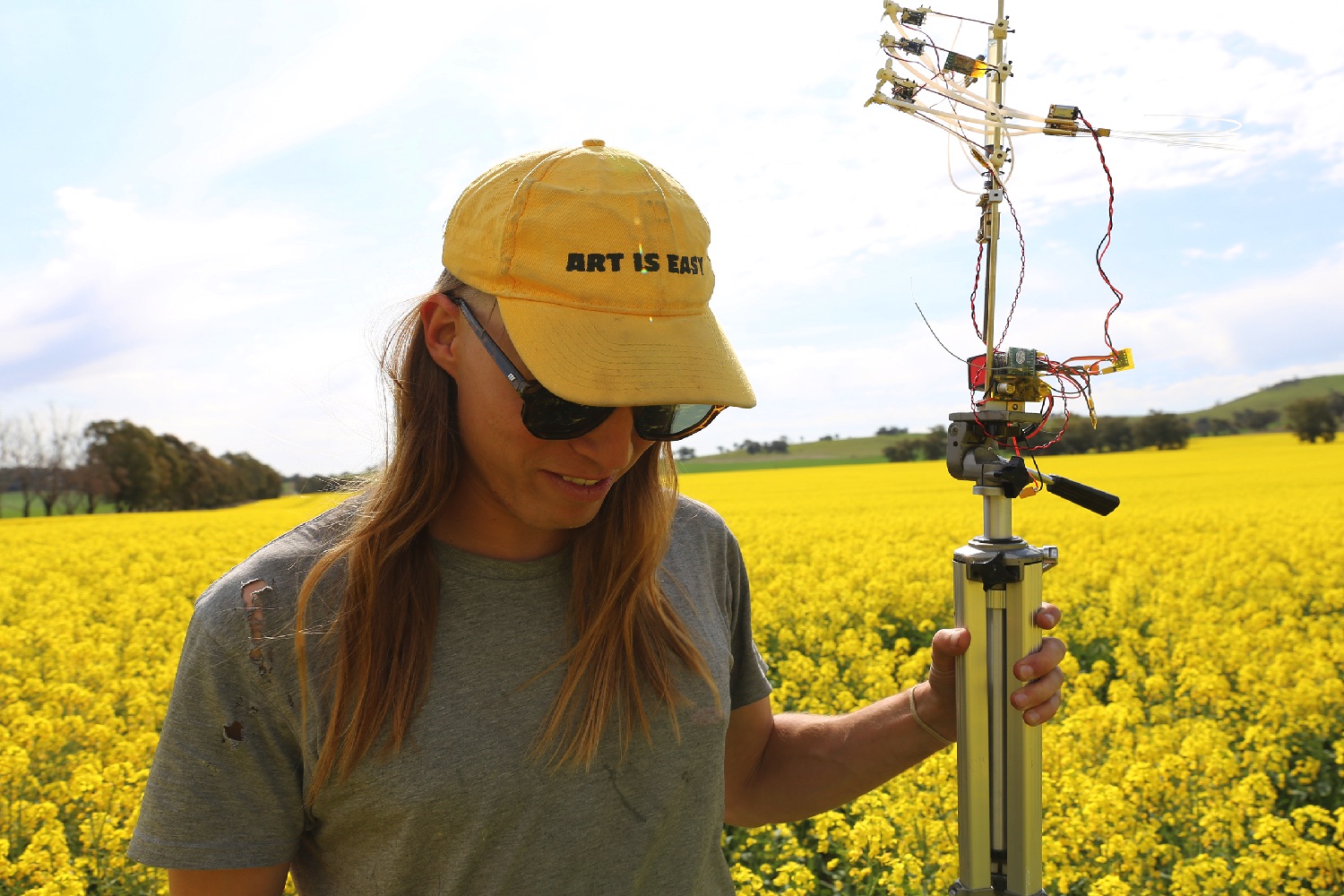We have previously written about one project that employed robot bees to pollinate flowers. Now, an Australian artist has come up with the inverse concept: Using a robotic flower to attract real bees. It sounds crazy, but it’s a fascinating example of biomimicry and the way that technology can integrate with the natural world.
The robot flowers were inspired by nature’s biotic pollination systems. Robotic replicas of real flowers, they are designed to attract bees and attach pollen, integrating into the reproductive cycle of local flora. The flowers are activated using an array of servos and actuators. These distribute pollen and synthetic nectar, which is then extruded toward a reservoir at the center of each flower. After this, articulated mechanical stamen retract to dowse the flower’s anthers in pollen, before returning to their static position.
Sugar water is also used as a nectar proxy to encourage bees to visit. The whole thing is filmed with a web-enabled camera. Who needs a regular garden?
“Bees are a vital part of our ecosystem,” Michael Candy, the creator of the project, told Digital Trends. “I feel that everyone needs to take the time and get to know these hard workers that keep our plants and crops pollinated. The Synthetic Pollenizer is an artwork proposing a future where technology and nature may flourish together.”
The problem wasn’t without its challenges, though. “It’s taken a long time to successfully coax bees into landing on the pollenizer,” Candy said. “Many different additions were prototyped and failed before this more recent success. There are millions of flowers out there to choose from, so visiting bees are a rarity at best.”
Ultimately, it’s more of a conceptual robotics project than a real-world solution to problems. But that’s not to say it couldn’t have real-world applications.
“During my collaboration with the resource ecologists group at Wageningen University, the project was looking at ways scientists could benefit by using it in the field,” Candy said. “The initial concept was to create a tool to track bees through a network of flowers. With this idea, we hoped to build a synthetic flower that could attach dye to the backs of bees and photograph them. That way we would know which bees visited what areas and when it happened: a useful and non-invasive technique to gather quantitative data.”
With fears about declining bee populations — and their impact on the natural ecosystem as a whole — the project couldn’t come along at a better time. “As an artwork, it’s bound to ask more questions than it answers,” Candy said. “But in this context, it proves that technology and nature can live in harmony.”
Editors' Recommendations
- 3D printed cheesecake? Inside the culinary quest to make a Star Trek food replicator
- Need a last-minute Halloween costume? Check out these 3D-printable getups
- Here’s what a trend-analyzing A.I. thinks will be the next big thing in tech
- Hit takers: The cutting-edge engineering making football helmets safer than ever
- Ceramic ink could let doctors 3D print bones directly into a patient’s body







